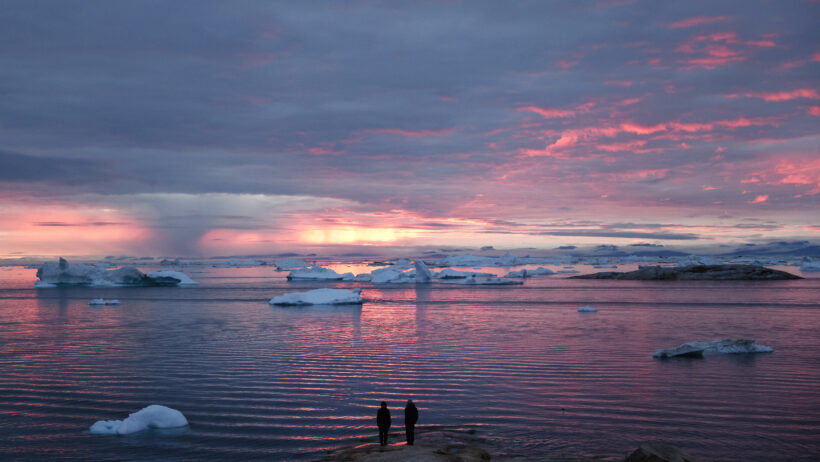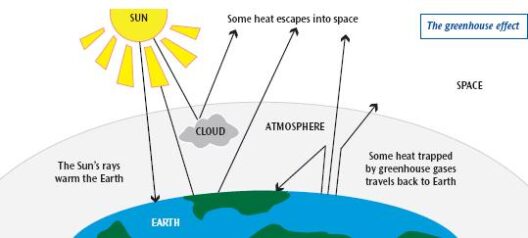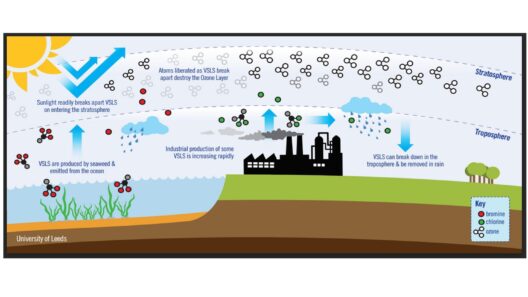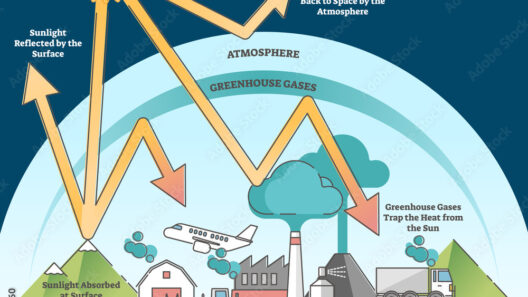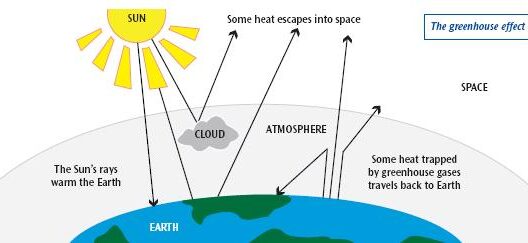The Arctic tundra, a biome characterized by its cold, desolate expanse and unique ecosystem, faces critical changes as global temperatures continue to rise. As one of the most climate-sensitive regions on the planet, the tundra serves as a barometer for climate change, revealing the unseen transformations that global warming invokes. These modifications have profound implications not only for the Arctic itself but for the entire global climate system.
At the very heart of the tundra’s degradation lies permafrost, a permanently frozen layer of soil that hinders vegetation growth and maintains the ecological balance of this frigid region. With global temperatures soaring, this permafrost is beginning to thaw, releasing long-sequestered greenhouse gases such as methane and carbon dioxide into the atmosphere. The implications of this thaw are profound; it has been estimated that the Arctic holds twice as much carbon as the atmosphere currently contains. Once released, these gases further exacerbate warming, creating a pernicious feedback loop.
The concept of a tipping point is crucial in understanding the Arctic’s plight. Scientific research indicates that once a certain threshold of warming is surpassed, permafrost may collapse irreversibly, transforming the region’s landscape drastically and accelerating climate change globally. As tundra begins to resemble bogs and wetlands, it loses its insulating effect, leading to even more permafrost thawing. This transformation disrupts the delicate balance of the tundra ecosystems, impacting flora and fauna that depend on the cold and stable environment.
The flora of the tundra, while seemingly sparse, boasts a remarkable adaptation to the unforgiving climate. Species such as mosses, lichens, and low shrubs have adapted unique survival strategies to thrive in nutrient-poor soils and extreme conditions. However, as temperatures rise, the indigenous plant life faces challenges that threaten its existence. Warmer climates have facilitated the encroachment of invasive species that outcompete native vegetation. This not only alters the landscape but disrupts the food chain — impacting herbivorous animals, such as caribou, that rely on specific plant species for sustenance.
Wildlife, too, faces a tumultuous future. Polar bears, emblematic of Arctic ecosystems, depend on sea ice as a hunting platform. As temperatures climb and ice diminishes, their hunting grounds dwindle, leading to increased competition for dwindling food sources. Other species, such as Arctic foxes and migratory birds, exhibit altered behaviors and breeding patterns in response to changing habitats. The interconnected web of life in the tundra reveals just how precarious existence can be as climate change steps up its onslaught.
Beyond the biological impacts, the melting Arctic presents socio-economic challenges that resonate globally. Indigenous communities, who have lived in harmony with the tundra for millennia, are witnessing profound disruptions to their traditional lifestyles. Thawing permafrost threatens their settlements, making them susceptible to flooding and erosion. Furthermore, indigenous knowledge systems, deeply rooted in the patterns of tundra life, face obsolescence as environmental changes outpace generational wisdom.
Moreover, the Arctic is a trove of natural resources, including oil and gas deposits concentrated below the permafrost. As access to these resources becomes more viable, the extraction industries pose an additional threat to already stressed ecosystems. The irony is palpable: as the climate deniers insist on drilling and mining, the fundamental issues at stake are the rapidly deteriorating climate conditions that deem this exploitation both reckless and unsustainable.
Combating climate change requires not only global cooperation but also an attitudinal shift towards how we integrate and respect the Arctic biome. Recognizing its significance as a carbon sink — and understanding the repercussions of its transformation — should forge a new perspective on climate discourse. It’s crucial for policymakers and communities to embrace proactive strategies that safeguard against these changes. Transitioning to renewable energy sources, implementing sustainable practices, and advocating for marginalized communities are steps conducive to alleviating pressure on the Arctic tundra.
The urgency of addressing Arctic climate issues is paramount. Increased awareness and education can stimulate essential discussions and drive action. It also creates opportunities for innovative solutions that minimize human impact while promoting ecological integrity. For individuals and organizations alike, channeling efforts toward conservation can foster a deeper understanding of our collective obligation to preserve the Earth’s systems.
As we stand on the precipice of irrevocable change, the Arctic tundra presents a unique case study in crisis and resilience. Scientific data continues to underscore the gravity of the situation, illuminating pathways for progressive action. Enlightened stewardship — informed by indigenous practices and scientific research — offers a blueprint for safeguarding this fragile ecosystem. Ultimately, it is a vital necessity for humanity to unite in an unwavering commitment to protect the Arctic and, by extension, our shared planet.
This intricate ecosystem remains a powerful reminder of our interconnected fates. In addressing the threats posed by climate change, we are not simply preserving the tundra; we are paving the way for a sustainable future for generations to come. The Arctic’s tipping point beckons a shift in perspective — the time to act is now.



